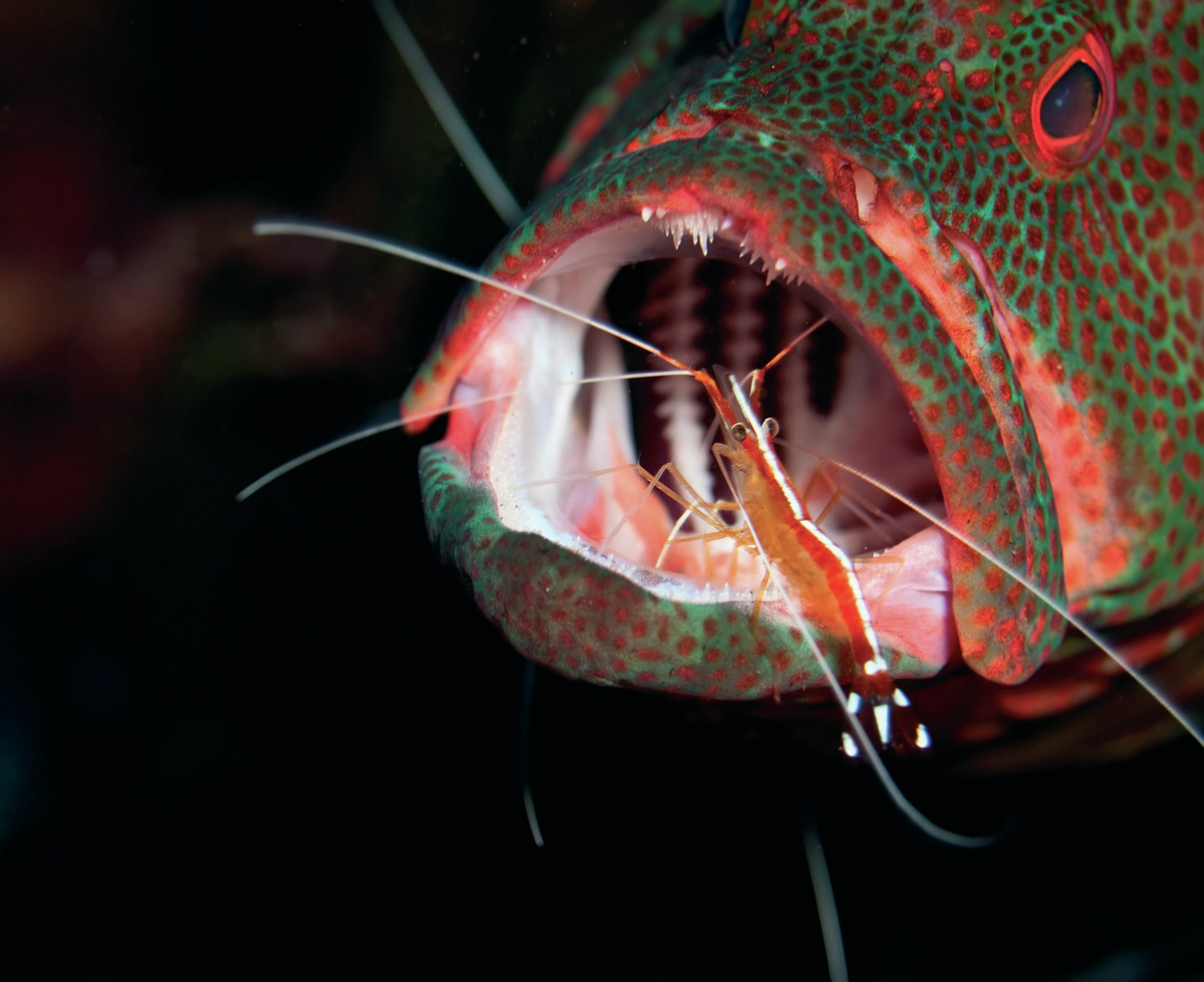
If you were to climb into the mouth of a giant predator, people would think you had a death wish. But some remarkable animals do this on a daily basis. Cleaner shrimps, in the coral reef ecosystems of the world’s oceans, are known for their daredevil eating habits. Along with some other species, including cleaner wrasse, remoras and gobies, cleaner shrimps feed on dead skin and the parasites that plague large fish. This provides nutrients for the shrimps and improves the health of their hosts. This service does not come at a cost, as the host fish don’t prey on the shrimp. Indeed, they provide safety from potential predators. The relationship between cleaner shrimp and other marine life is a classic example of a mutualistic symbiosis — one fish’s problem is another shrimp’s dinner.
Some cleaner shrimps wait in pairs, others congregate in groups and perform a side-to-side ‘rocking dance’ to attract fish to their stations. They then use their mouth parts and the claws on their front legs to pluck items from the surfaces of their hosts, even going so far as to clean out gills while inside the host’s mouth.
Your organisation does not have access to this article.
Sign up today to give your students the edge they need to achieve their best grades with subject expertise
Subscribe




